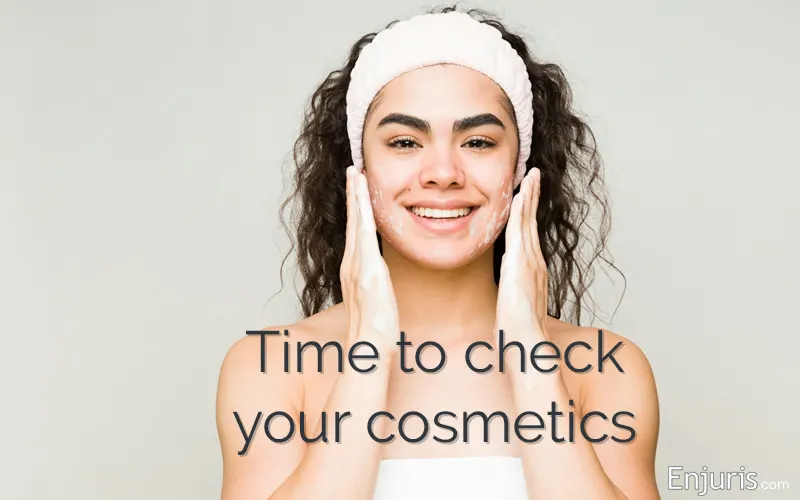

Hidden preservatives in beauty products may expose consumers to harmful chemicals—and legal consequences for brands are already beginning
Call it influencer culture. Or modern society’s standards of beauty. Or people who just want to feel good about themselves.
However you label it, one thing is clear: Today, more than ever, people are using a wide range of beauty and personal care products for various reasons. But you might want to think twice before applying fake eyelashes, or even using your favorite soap or lotion.
A recent study included 64 Black and Latina women in the Los Angeles area. They photographed the ingredient lists of the beauty and personal products they used at home for a week. More than half the women were found to be using products that contain formaldehyde or formaldehyde-releasing preservatives.
Why is formaldehyde dangerous?
Formaldehyde is a known carcinogen. The International Agency for Research on Cancer (IARC) classifies it as a Group 1 human carcinogen. Long-term exposure is linked to nasal cancers, leukemia and other serious health issues. Formaldehyde is a human-made chemical compound produced through industrial processes such as the oxidation of methanol. It’s naturally present in some foods, such as fruit and vegetables.
Even at low levels, it’s a strong irritant that could cause eye, nose, and throat irritation; skin rashes or allergic contact dermatitis; and asthma attacks or breathing problems.
How does formaldehyde in cosmetics affect humans?
Formaldehyde is a great preservative, which is why funeral homes use it for embalming.
That’s why it’s used in cosmetics. Cosmetics containing formaldehyde-releasing preservatives have chemicals that slowly break down over time (or in response to heat, light, or pH changes) and release formaldehyde gas as a byproduct. This helps kill bacteria and mold in the product, extending shelf life and reducing contamination risks. It’s usually used to prevent microbial growth and extend shelf life. However, prolonged or repeated exposure through skin absorption, inhalation, or contact with sensitive areas like the scalp, eyes, or mucous membranes increases the risk. Although some countries have banned or strictly limited formaldehyde in cosmetics, many products in the U.S. still contain formaldehyde-releasing chemicals.
The released formaldehyde gas can be inhaled, absorbed through the skin, or cause irritation upon contact with mucous membranes (eyes, nose, mouth). Over time, chronic exposure—especially through daily-use products—has been linked to sensitization, dermatitis, asthma, and even cancer (according to the EPA and IARC).
These ingredients don’t say “formaldehyde” directly on the label, but they release it:
- DMDM Hydantoin
- Quaternium-15
- Imidazolidinyl urea
- Diazolidinyl urea
- Bronopol (2-bromo-2-nitropropane-1,3-diol)
- Sodium hydroxymethylglycinate
They are often used in shampoo, conditioner, lotion, liquid soap and body wash, makeup, eyelash glue, baby wipes, and nail products.
Can you avoid formaldehyde exposure from personal care products?
You can certainly try.
- Read ingredient labels and avoid products with the ingredients listed above.
- Choose products labeled “formaldehyde-free” or “preservative-free” (though labeling isn’t always fully transparent).
- Use fragrance-free or hypoallergenic products, which are less likely to contain these chemicals.
Why did the study focus on Black and Latina women?
The researchers understood that Black and Latina women tend to be more likely to experience exposure to formaldehyde in nail and hair products than white women, often because the toxic substance is found in chemical hair straighteners.
The new study shows that formaldehyde and its byproducts are in hair relaxers, in addition to other beauty products. One participant in the study was using leave-in conditioner, rinse-out conditioner, and body wash that had formaldehyde. Another person was using hand soap about twice a day that had formaldehyde-releasing agents.
Overall, the study found more than a thousand products that contained formaldehyde or formaldehyde-releasing agents.
While social researchers mentioned social and economic pressures that women of color face in conforming to various beauty standards, they also said it would be worthwhile to compare products used by white women, as well.
Are there legal implications or potential lawsuits for formaldehyde in beauty products?
Yes, there are already legal actions against manufacturers for formaldehyde in everyday beauty products. Several class-action lawsuits have been filed, alleging that companies failed to disclose the presence of harmful chemicals, leading to health problems like hair loss and scalp irritation. Notably, Johnson & Johnson faced lawsuits over its OGX line of shampoos and conditioners containing DMDM hydantoin, with plaintiffs claiming the products caused hair loss.
Despite the known risks, regulatory action in the U.S. has been limited. The FDA has acknowledged the dangers of formaldehyde in hair-straightening products but has yet to implement a comprehensive ban. This regulatory gap underscores the importance of consumer vigilance. Consumers are advised to read product labels carefully and be aware of ingredients like DMDM hydantoin, quaternium-15, and imidazolidinyl urea, which can release formaldehyde.
What does the formaldehyde study mean for you?
There are a couple of ways this might affect you.
First, if you’re using products that contain formaldehyde or its agents, you might wish to reconsider and look for alternatives.
Second, if you’ve already experienced injury or illness from a product containing formaldehyde, you can contact a personal injury lawyer to determine whether you might be eligible to file or join a lawsuit. Be prepared to share the specific product, the length of time and frequency with which you used it, along with evidence of how you suffered harm as a result.


Benzoyl peroxide has been used for decades to prevent acne. But a recent study suggests that it breaks down into benzene, which can be very dangerous.
#Formaldehyde #Popular #Beauty #Products